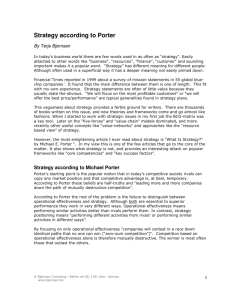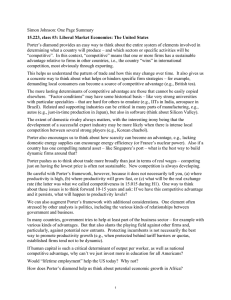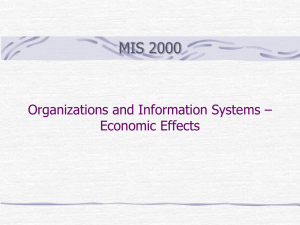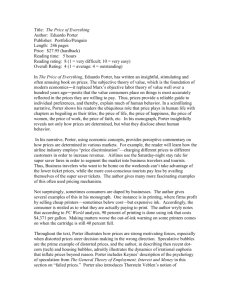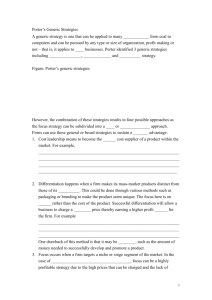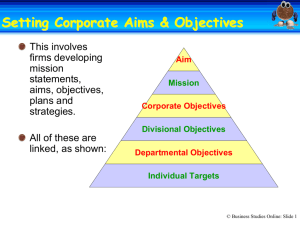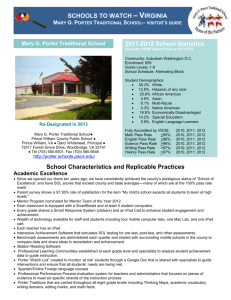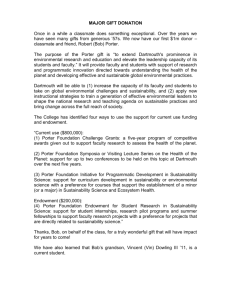TITELs
advertisement
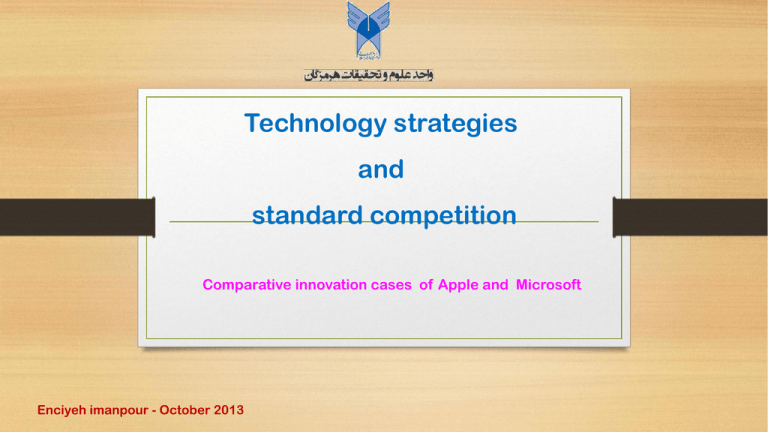
Technology strategies and standard competition Comparative innovation cases of Apple and Microsoft Enciyeh imanpour - October 2013 TITELs: 1. Introduction 2. Theoretical framework 2.1. Innovation and innovation process 2.2. Five forces Porter's approach 2.3. Strategies in managing technological innovations 3. Methodology for analyzing the platform creation process 4. Understanding the process of technological change in various industries 5. Case study of Apple and Microsoft's technology strategies 6. Generalizable principles synthesized from the case study analysis 7. Conclusions and avenues for future research • 1. Introduction • Competition to achieve competitive advantage often involves the ability to establish new standards for the interworking of products and services. The outstanding classic cases of standard battle are Sony Betamax and Matsushita VHS standards in the Videocassette Recorder (VCR) business, the standard competition among the powerful players of Visa Open Platform, MasterCard/ Mondex Multos, Proton World's Proton, Microsoft Windows for Smart Cards in the smart card industry and the recent standard competition between HD-DVD and Blu Ray in the Digital Versatile Disc player (DVD) business. This study endeavours to understand the use of technology strategies and competition to establish technology standards in the most outstanding innovative companies of Apple and Microsoft. The comparative case study analyses using the new methodological framework to contribute to the area of innovation management • 2. Theoretical framework • 2.1. Innovation and innovation process • Innovation is a process of transforming the technology frontier into the commercialized productin a competitive market (Daft, 1982; Rothwell & Gardiner, 1985; Schott, 1981). The innovation process characteristically exhibits an S Pattern. The stages along the S-curve are characterised by the efforts of the innovator to adapt a technological development (invention) for transformation into an innovation (commercial product). The innovation process can be described by the forces of technology push (Schumpeter, 1939) and demand pull (Schmookler, 1962) or their interaction (Freeman, 1982) as trigger of innovation. Technology push views the innovation process as simple linear and sequential with emphasis on research and development. Demand pull views the innovation process as simple linear and sequential with emphasis on the market Matthyssens, Vandenbempt, & Berghman, 2006). (Brem & Voigt, 2009; Hung, 2010; • The analysis of the innovation process in this paper is based on the concept of innovation life cycle since the model provides a basis to understand a process of commercialization. It is argued that the industry plays an important role in the innovation process since innovations are developed along with the markets for them. According to Fisher and Pry (1971), when a new innovation reaches about 5% penetration of the potential application market, it provides a reasonable base for forecasting the speed and ultimate penetration achievable. Vernon (1966)'s Product Life Cycle (PLC) is a classical model explaining the development as a pattern of product substitution (the S-curve pattern).. Vernon's PLC shows a progression of innovation from process innovation to product innovation 2.2. Five forces Porter's approach • The influential work in innovation strategy is owed to Michael Porter ,Porter emphasised the use of competitive strategy as the way to achieve competitive advantage. who argue convincingly that strategies to cope with a changing competitive environment are associated with the firm's capabilities. The firm's capabilities have been described as amalgam of resources , technology, organisational capabilities, experiences and relationships (Fahy,1996; Reed & DeFillippi, 1990).Porter pioneered the ‘Five Forces’ approach for analyzing the firms' strategic position. The five forces of competitive position model are: relations with suppliers; bargaining power of buyers; threats of new entrants; threats of substitute products or services; and rivalry amongst existing firms . • He argues that a firm's strategy is influenced by these forces and suggests the firm to find a position in an industry to defend itself against the forces or to influence them in its favor (Porter, 1980). • 2.3. Strategies in managing technological innovations • Firms, compete according to their different capabilities. Strategies to cope with a changing competitive environment are associated with the firm's capabilities. Under the model of Schumpeterian competition, being the first mover or follower in the industry not only influences the extent of innovation adoption but also the benefits secured. According to Nelson and Winter and Schumpeter perfect competition was incompatible with innovation. As a matter of fact, perfect competition is and always has been temporarily suspended whenever anything new is being introduced…” Being first to the market can help firms to take advantage of benefits from initial demand in the market and enjoy an extra profit until competitors can respond. The pre-emptive move to capture the profit-making opportunities and to respond more accurately to the needs and responses of customers before a further move to launch other products may be more important and thus the innovation, from the outset, does not have to take off with the first best solutions to the market Porter (1980) argues that a firm's strategy is influenced by these forces and suggests the firm to find a position in an industry in order to defend itself against these forces or to influence them in its favor . the adoption of strategies is important in managing innovations and in making the innovation happen (Hamel, 2007; Hamel & Prahalad, 1994; Porter, 1980, 1985). When the resources and capabilities required in the innovation are not available within an economic entity, it is likely that innovators adopt collaborative strategy and vice versa. However, the innovatory strategies employed by innovators along the stages of innovation can change over time. Keywords: Technology strategy Standard competition Apple Microsoft Technology platform Competitive advantage Thank You


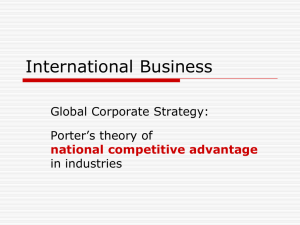
![[5] James William Porter The third member of the Kentucky trio was](http://s3.studylib.net/store/data/007720435_2-b7ae8b469a9e5e8e28988eb9f13b60e3-300x300.png)
